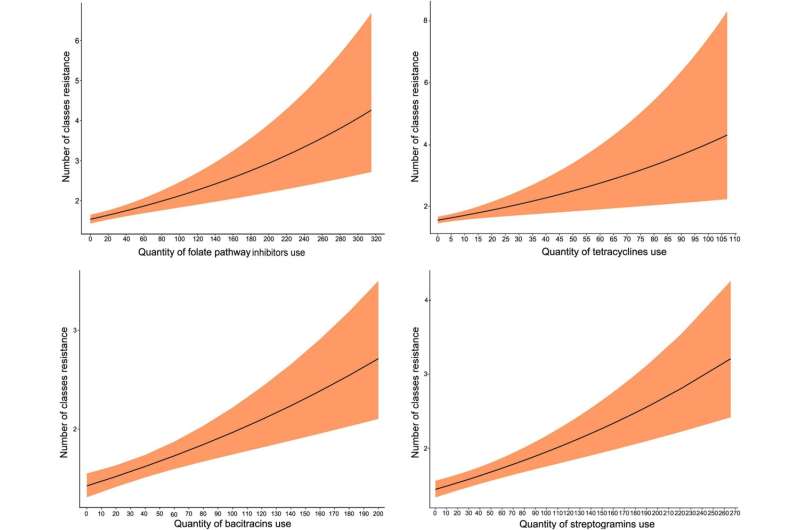Modeling antimicrobial use and resistance in Canadian turkey flocks

Antimicrobial resistance in gut bacteria is constantly being detected on poultry farms and in poultry retail products worldwide, including in turkey flocks. Concerningly, surveillance information and studies on the associations between antimicrobial resistance and antimicrobial use in turkeys have been scarce during the last decade. In a new study, researchers across North America have modeled how antimicrobial use impacts the emergence of antimicrobial resistance in Escherichia coli isolated from Canadian turkey flocks.
Antimicrobial resistance has long been identified as a threat to global health, with limited options for treatment in animals and humans. Although antimicrobials help to treat and control bacterial infections in poultry flocks, they also lead to increased resistance because the surviving bacteria pass on their resistance genes not only to their offspring but also to other bacterial species. Moreover, these bacteria can also be transferred to humans through the consumption of contaminated food or contact with infected poultry.
Csaba Varga (IGOH), an assistant professor of epidemiology, and his research group used data that had been collected by the Canadian Integrated Program for Antimicrobial Resistance Surveillance. From 2016-2019 veterinarians from each province in Canada visited turkey farms annually to collect data on antimicrobial use and obtain fecal samples from flocks that were chosen at random.
"Most researchers work on poultry, especially chickens. Not many researchers work on turkeys," said Rima Shrestha, a postdoctoral research associate in the Varga lab. "In Canada, they have integrative surveillance, which provides us data about antimicrobial use and resistance."
The researchers used E. coli as an indicator of antimicrobial resistance because these bacteria are a part of the intestinal flora in humans and animals. They can also be detected easily in fecal and environmental samples. "E. coli can harbor antibiotic resistance genes that they can preserve and transmit to other bacteria in the gut, making them good indicators of antimicrobial use," Varga said. The E. coli isolates from the fecal samples of turkeys were tested for their susceptibility to 14 different antimicrobials.
To study the association between antimicrobial use and resistance, the researchers employed new modeling techniques that considered the disease indications for antimicrobial use, the quantity of antimicrobials used, the length of treatment, the weight of birds, and the administration route.
"Our study shows that the use of antimicrobials in the feed is the main driver of resistance," Varga said. "In addition, antimicrobials were also injected into the eggs at the hatchery, which produced resistance in E. coli." The researchers also found that treating certain diseases, including intestinal infections and blood infections caused by E. coli contributed to the development of resistance to antimicrobials.
"We are currently working on looking at antimicrobial resistance in other pathogens, including Salmonella and Campylobacter," Shrestha said. "We also want to look at data from the US so we can compare it to the Canadian data and understand how to mitigate antimicrobial resistance. We need to have stewardship efforts from turkey producers and veterinarians because it cannot be controlled by just one person or even one farm."
The study was published in Frontiers in Microbiology.
More information: Rima D. Shrestha et al, Associations between antimicrobial resistance in fecal Escherichia coli isolates and antimicrobial use in Canadian turkey flocks, Frontiers in Microbiology (2022). DOI: 10.3389/fmicb.2022.954123
Journal information: Frontiers in Microbiology
Provided by University of Illinois at Urbana-Champaign
















